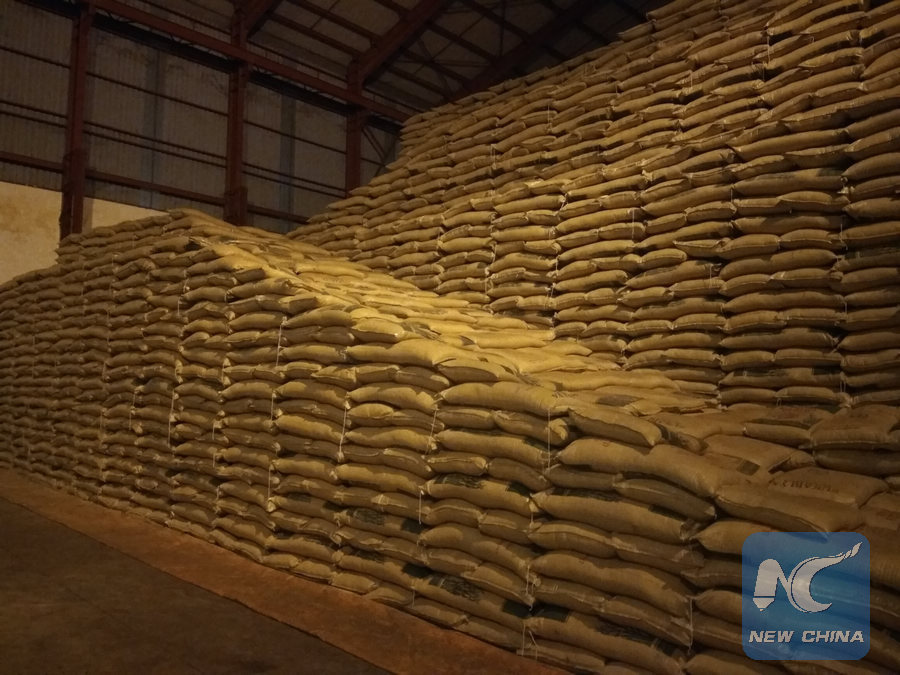
Sacks of sugar stored at Kakira Sugar factory in the eastern Ugandan district of Jinja, Jan. 4, 2016. Uganda is currently facing a sharp increase in sugar prices as a result of a long dry spell that has pushed down production levels and yet the demand is high. (Xinhua/Ronald Ssekandi)
JINJA, Uganda, Jan. 9 (Xinhua) -- Gigantic machines at Kakira Sugar factory in eastern Uganda roar throughout the day and night processing the popular sweet product. Truck loads of sugarcane line outside the factory premises waiting to deliver cane.
However on the farms and in the market, things are a little different as the prices of the end product, sugar, are skyrocketing mainly due to the long dry spell that the country experienced last year.
Less cane is now brought to the factory as a result of poor harvests. This has resulted in falling sugar production.
Figures from the Uganda Sugar Manufacturer's Association (USMA) show that the country has been producing 500,000 tonnes of sugar a year but due to shortage of the sugarcane, production is now below 450,000 tonnes.
The meteorological department is warning that the country should brace itself for tougher times as this year the dry spell is going to be longer, leading to poor crop harvests. Ugandans largely depend on rain-fed agriculture.
"This season has been so bad for us, our sugarcanes are drying up in the gardens," Isa Budugo, a sugarcane farmer told Xinhua in an interview on Wednesday.
Government argues that the spike in price of sugar is an emergency that needs to be addressed.
Asked why the government did not anticipate the increase in prices, Trade Minister Amelia Kyambadde said they could not foretell natural calamities like climate change.
Besides the natural calamities that have befallen the sugar industry, there are other factors that are driving the run-away prices.
The demand for sugar has increased both within the country and outside. USMA data shows that Uganda consumed about 350,000 metric tonnes in 2015 but this was expected to increase to 360,000 tonnes in 2016 judging from the demand.
Uganda also exports 25 percent its sugar to neighboring countries like Kenya, Democratic Republic of the Congo, Rwanda, and South Sudan.
ACTIONS
Kyambadde argues that the manufacturers should release the sugar in their reserves or else the government will consider asking people to import sugar to address the supply shortages that are pushing up the prices.
The government has also planned to start irrigation schemes in the face of prolonged dry spells.
Some farmers are also planning to resort to irrigation instead of depending solely on rain.
"I'm planning to start irrigation on my farm because if I don't do it, it will be me on the losing side. I cannot afford to wait until government starts its irrigation programs," Budugo said.

